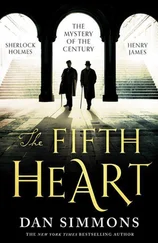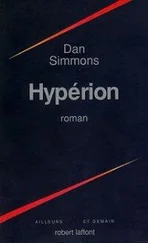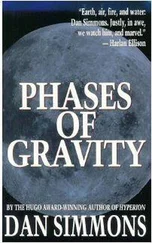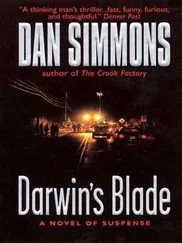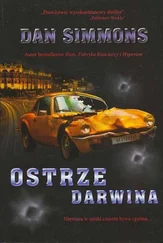In the summer of 1939, Congressman Francis Case, on behalf of the appropriations committee, personally looked into working conditions inside the advancing Hall of Records entrance hallway and reported that working conditions there were nearly impossible and that the odds for the workers contracting silicosis and then suing the government were too high.
Work on the Hall of Records ceased forever with the blowing of a whistle on a July afternoon in 1939. After workmen left the mountain in 1941, it was discovered that mountain goats had taken up residence in the 14-foot-wide-by-20-foot-high tunnel that ran 75 feet into the mountain.
The Theodore Roosevelt head, the fourth and last figure to be completed on Mount Rushmore, was officially dedicated on the night of July 2, 1939, nine years after the George Washington head had been unveiled. That night was the first time the Mount Rushmore faces were fully lighted—however briefly—and Borglum did so first by skyrockets and aerial bombs and then by a battery of twelve powerful searchlights being switched on. Singer Richard Irving sang Irving Berlin’s brand-new song, “God Bless America.” Although President Roosevelt did not attend, some 12,000 guests turned out for this dedication of the final head, and silent-movie cowboy star William S. Hart and a group of “Sioux Indian dancers in full regalia” added excitement to the evening.
Borglum announced that he had years, if not decades, of work still ahead of him at Mount Rushmore. Much “bumping”—refining of the facial features by specialized pneumatic hammers—remained, and he still had to blast out and carve the upper bodies, Lincoln’s hand, and so forth. Nor had he given up hope on the Hall of Records; he was looking at improved ventilation and other work safety features to put into place as soon as the funds flowed again.
In February of 1941, Borglum had begun a new charm offensive with FDR and Congress—insisting to the president that funding had to be improved so that the “Shrine of Democracy” could be fully finished, as he had promised Roosevelt in 1936, during the president’s time in office. Borglum set off for Washington to argue for increased funding—as he had every spring for the past fourteen years—and this time his wife, Mary, went with him. They stopped off in Chicago so that Borglum could give a speech and while there, Borglum saw a specialist about a prostate problem he’d been having.
The doctor recommended surgery and Borglum decided to get it out of the way immediately so that he could lead the spring work rush back at Mount Rushmore.
A series of blood clots from the surgery kept Borglum in the hospital for two weeks, and on February 28 a messenger arrived with the crushing news that President Roosevelt was cutting all non-defense spending to the bone and would no longer approve moneys for projects such as Mount Rushmore.
On March 6, 1941, exactly one week after he received the news from Roosevelt and after a series of embolisms created by more blood clots, Gutzon Borglum died in the Chicago hospital.
Many of the workers who’d labored on Mount Rushmore for almost fifteen years thought that Borglum’s body should be interred in the unfinished Hall of Records hallway tunnel, but the Park Service would not consider such a thing. Borglum’s remains were temporarily interred in Chicago and then moved to Forest Lawn Cemetery in Glendale, California, three years later. A memorial service for Borglum was held for the workers and local friends of the boss in Keystone’s white-steepled Congregational church.
The Park Service, Congress, and the Mount Rushmore Commission were ready to shut down work that very week, but the Mount Rushmore workers petitioned the commission to appoint Borglum’s son, Lincoln, as the new director and to go on and “complete the work as to his father’s wishes.”
The commission agreed, but it was only a token gesture. With only $50,000 in funds remaining, the twenty-nine-year-old Lincoln Borglum focused the last months of work on finishing up some of the fine details on Teddy Roosevelt’s face and doing some final touch-ups of George Washington’s collar and lapels.
That last summer season of work went very well and seemed, at least to a visiting outsider, like all the other productive summers of work, with baseball games by the Rushmore team, horseplay coming down the 506 steps on Friday, Saturday night dances, free Sunday afternoon motion pictures at Lincoln Borglum’s place, and lots of hungover men not receiving to-MAH-to juice after climbing the 506 stairs on Monday morning.
But it wasn’t the same, and every man still working on the project knew it. Nothing in the increasingly alarming world in the autumn of 1941 seemed quite the same.
The last whistle blew and the last pneumatic drill and bumper fell silent on Mount Rushmore on October 31, 1941.

THE STORY OF PAHA SAPA’S SON Robert’s Jewish-Belgian father-in-law, Monsieur Vanden Daelen Adler, was later told in the 1955 book Survival of a Belgian Jewish Diamond Cutter and was turned into the low-budget 1959 movie Diamonds or Death , starring Macdonald Carey as Adler and Ruth Roman as Adler’s wife (“Zigmond” in real life, “Suzanne” in the film) with the twenty-five-year-old Maggie Smith, in only her second film role, playing “Renée.” The film, never released on VHS or DVD, is known today to historians for the wonderful deep-focus photography by Paul Beeson and by its moody, totally inappropriate-to-the-subject score by jazz trumpeter Dizzy Reece. Some Star Trek fanatics are aware of the film due to the brief and rather awkward appearance in it of actor Leonard Nimoy (credited in the movie as “Leonard Nemoy”) as the Nazi sidekick to the Gestapo officer “Heinrich” who was so obsessed with stopping the Adler family from fleeing Belgium. (“Heinrich,” overplayed by Henry Rowland, had been an uncredited Nazi officer in the infinitely superior Casablanca seventeen years earlier. Nemoy-Nimoy had only four lines in the movie, but his atrocious German accent with those four lines somehow is well-known to serious Star Trek fans.)
In reality, diamond cutter turned diamond merchant Vanden Daelen Adler had one of the greatest success stories of any Jew seeking to get his family out of Belgium before World War II.
When the war broke out in 1939, Belgium had a population of around nine million people, some 90,000 of them Jews. More than 80,000 of these Jews were concentrated in the two major cities of Brussels and Antwerp. More than three-fourths of Belgian Jews before the war were self-employed, with the majority of these involved in diamond cutting or the selling of diamonds. The diamond trade in the port city of Antwerp was almost completely in Jewish hands.
Germany invaded and occupied neutral Belgium in May of 1940. Thousands of Jews fled Belgium during the invasion and thousands more were deported to France (where they would soon fall under German control again), so that by November of 1940, there were an estimated 55,000 Jews remaining in the country. Reports of the number of Belgian Jews killed during the war vary greatly, ranging from an American prosecution exhibit at the Nuremberg War Crime trials that “approximately 50,000” Jews deported from Belgium were killed in Auschwitz-Birkenau gas chambers between April 1942 and April 1944, to claims by some Belgian historians that “more than half of the Jewish population of Belgium survived the war” to arguments by even more recent revisionist historians that “Belgium lost virtually none of its native Jewish population.” The so-called Anglo-American Committee of Inquiry announced in 1946 that, out of a total of 5.7 million European Jews who perished during the war years, 57,000 were Jews from Belgium. One Jewish historian later put the number at 26,000. No two historians seem to agree.
Читать дальше


